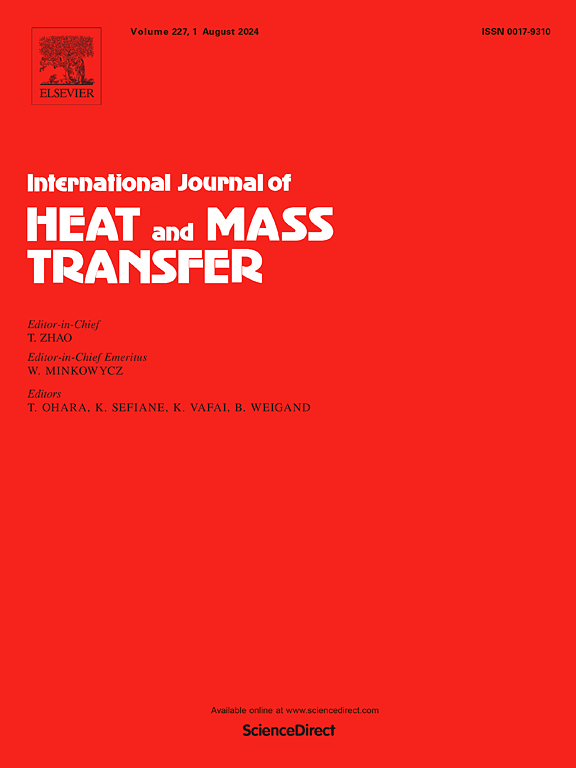The effect of excavation and soil recovery on soil temperature and ground infrared radiation containing a metal-bearing block
IF 5
2区 工程技术
Q1 ENGINEERING, MECHANICAL
International Journal of Heat and Mass Transfer
Pub Date : 2025-02-10
DOI:10.1016/j.ijheatmasstransfer.2025.126802
引用次数: 0
Abstract
The effect of excavation and soil recovery on the soil temperature field and surface infrared properties is a critical factor in shallow subsurface target detection, yet it has not been sufficiently addressed in existing research. This study employs a combined discrete element method and MIE scattering model to simulate the changes in soil surface morphology and physical properties after the shallow burial of metal blocks in sandy, loamy, and clay soils. By integrating soil heat and moisture transfer with an infrared radiation model, we simulate the resulting temperature field and infrared radiation characteristics of the surface after excavation. The results indicate that the granularity of sandy soils and the high cohesion of clay soils lead to relatively minor changes in surface morphology and physical parameters in comparison to loamy soils. Infrared imaging analysis reveals that buried materials are most easily detected in loamy and clayey soils, while detection is more challenging in sandy soils. Furthermore, the comparison of temperature differences between the surface center and surrounding environment demonstrates that the characteristics of buried objects in loamy and clay soils are most pronounced at 12:00 and 24:00, enhancing the feasibility of underground target detection at these times. The study also found that different excavation speeds had a minimal impact on soil parameters at the surface. Faster excavation speeds increase shear stresses at the subsurface interface, thereby enhancing the density of the subsurface layer. Additionally, stronger solar radiation was found to improve the detection of buried objects, reducing the difficulty of underground target identification. The methodology proposed in this paper provides a more realistic approach to underground target detection by accounting for the dynamic changes in soil properties during excavation and recovery processes.
求助全文
约1分钟内获得全文
求助全文
来源期刊
CiteScore
10.30
自引率
13.50%
发文量
1319
审稿时长
41 days
期刊介绍:
International Journal of Heat and Mass Transfer is the vehicle for the exchange of basic ideas in heat and mass transfer between research workers and engineers throughout the world. It focuses on both analytical and experimental research, with an emphasis on contributions which increase the basic understanding of transfer processes and their application to engineering problems.
Topics include:
-New methods of measuring and/or correlating transport-property data
-Energy engineering
-Environmental applications of heat and/or mass transfer

 求助内容:
求助内容: 应助结果提醒方式:
应助结果提醒方式:


